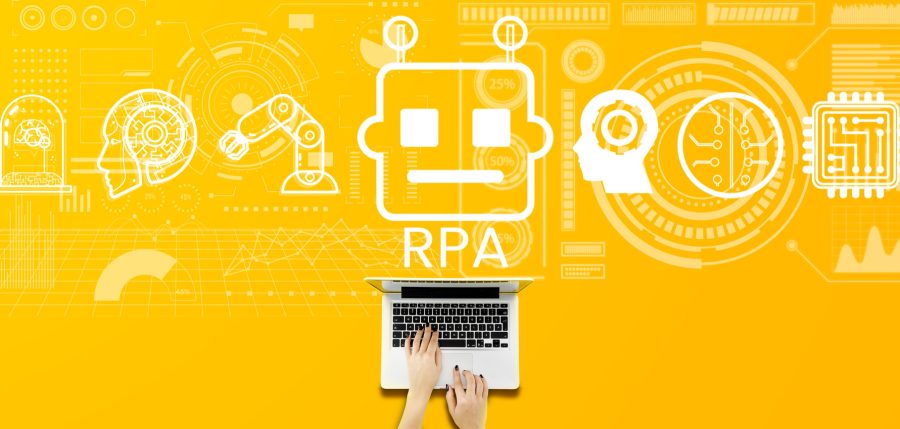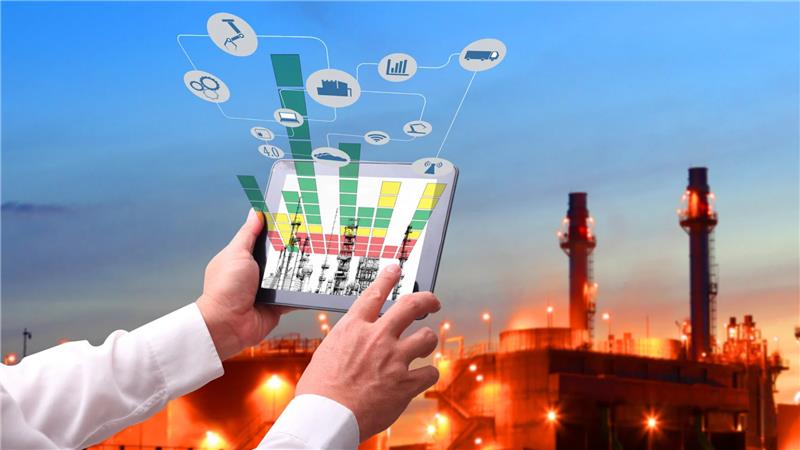
Automation has become a vital part of how businesses operate today. With the rise of technology, more companies are looking for ways to automate their processes to save time and reduce costs. But as technology evolves, so does the concept of automation. Terms like hyper-automation services and intelligent automation services have started to appear, making it essential to understand what they mean and how they differ from traditional automation. In this blog, we will go over these principles in detail to help you decide which one is ideal for your organization.
What is Automation?
Automation is the use of technology to complete tasks that would otherwise require human contact. These tasks are usually repetitive and time-consuming, making them ideal candidates for automation.Business automation services enable businesses to automate regular procedures, freeing up human resources to focus on more complicated and important duties.
For example, consider the process of sending out invoices. Traditionally, an employee would have to manually create and send each invoice, which could take hours or even days. With automation, this process can be done in minutes with just a few clicks. This not only saves time but also reduces the chance of errors.
Automation can be applied in various industries, from manufacturing to customer service. In manufacturing, machines can be programmed to perform repetitive tasks like assembly, packaging, and quality control.In customer service, chatbots can be used to answer basic questions while human agents tackle more difficult issues.
The primary benefit of business automation services is increased efficiency. Businesses can cut operational costs and increase productivity by automating routine processes, allowing them to compete in a quickly changing market.
What is Hyper Automation?
While traditional automation focuses on automating individual tasks, hyper-automation services take it a step further by automating entire processes. This entails combining technology such as robotic process automation (RPA), artificial intelligence (AI), and machine learning to produce a completely automated workflow.
The goal of hyper-automation services is to create a digital workforce that can handle complex processes from start to finish. This includes automating tasks, making decisions, analyzing data, and adapting to changes in real-time.
For instance, a business could utilize RPA to automate data entry, AI to analyze the data, and machine learning to create predictions based on the analysis. These technologies work together to create a seamless process that requires little to no human intervention.
One key feature of hyper-automation services is their ability to integrate with existing systems. This enables firms to automate procedures involving several departments or systems, resulting in a more efficient and streamlined workflow.
Hyper Automation is particularly useful for businesses with complex operations. Companies that automate entire processes can reduce task completion time, enhance accuracy, and raise overall productivity.
What is Intelligent Automation?
Intelligent automation services go even further by adding cognitive capabilities to automation. This means that the technology not only performs tasks but also learns from them, making it more intelligent over time. Intelligent automation combines AI, machine learning, and other advanced technologies to create systems that can think, learn, and adapt.
For example, an intelligent automation system might start by performing a simple task like sorting emails. Over time, it learns to recognize patterns in the emails and can begin to categorize them automatically. This reduces the need for human intervention and allows the system to handle more complex tasks.
Intelligent automation services are beneficial for businesses that deal with large amounts of data or complex decision-making processes. By using AI and machine learning, these services can help companies make better decisions faster.
The main difference between intelligent automation services and hyper-automation services is the level of cognitive ability. While hyper-automation focuses on automating entire processes, intelligent automation goes a step further by adding a layer of intelligence. This enables the system to not only automate operations, but also learn and adapt to new circumstances.
For instance, in a customer service setting, an intelligent automation system might start by answering basic questions. As it interacts with customers,It learns to detect more complicated questions and eventually handles them without human involvement. This not only increases efficiency, but also improves the client experience.
Comparing Automation, Hyper Automation, and Intelligent Automation
Now that we have defined each type of automation, let’s compare them to see how they differ.
- Automation focuses on automating individual tasks. It is ideal for businesses looking to improve efficiency by automating routine, repetitive tasks. Business automation services can help companies save time and reduce errors by allowing machines to handle these tasks.
- Hyper Automation takes automation to the next level, automating whole operations. It entails using a variety of technologies to construct a completely automated workflow that requires little to no human interaction.
- Hyper Automation services are ideal for businesses with complex operations that involve multiple systems or departments.
- Intelligent automation adds cognitive capabilities to automation, allowing systems to learn and adapt over time. It is helpful for firms dealing with vast amounts of data or sophisticated decision-making processes. Intelligent automation services can help companies make better decisions faster by using AI and machine learning to analyze data and predict outcomes.
Each type of automation provides distinct advantages, making it critical for organizations to select the one that best meets their requirements.
Real-world applications of Automation, Hyper Automation, and Intelligent Automation
Let’s examine some examples to understand better how these different types of automation can be applied in the real world.
- Automation: A retail organization may utilize business automation services to manage inventory. By automating the process of tracking stock levels and reordering products, the organization can ensure that the correct products are always in stock without requiring manual intervention.
- Hyper Automation: A financial services company might use hyper-automation services to streamline its loan approval process. By automating tasks like data entry, document verification, and risk assessment, the company can reduce the time it takes to approve loans and improve the customer experience.
- Intelligent Automation: A healthcare provider might use intelligent automation services to manage patient records. By analyzing patient data using AI and machine learning, the system can identify patterns and make recommendations for treatment, helping doctors make more informed decisions.
These examples show how automation, hyper-automation, and intelligent automation can be applied in different industries to improve efficiency and reduce costs.
Choosing the Right Automation Solution for Your Business
Your requirements and goals determine the type of automation that is best for your business. Here are some things to consider while deciding between business automation, hyper-automation, and intelligent automation services.
- Complexity of Tasks: If your business involves routine, repetitive tasks, business automation services might be the best option. However, if you have complex processes that involve multiple systems or departments, consider hyper-automation services.
- Data and Decision-Making: If your business deals with large amounts of data or requires complex decision-making, intelligent automation services might be the best fit. These services can help you make better decisions faster by analyzing data and predicting outcomes.
- Integration with Existing Systems: If your business already has existing systems in place, you’ll want to choose an automation solution that can integrate with those systems. Hyper Automation services are particularly good at integrating with existing systems to create a seamless workflow.
- Scalability: Consider how your business might grow in the future. If you expect your operations to become more complex over time, you may want to choose a solution that can scale with your business. Hyper automation services and intelligent automation services are both highly scalable and can adapt to changing business needs.
Conclusion
Automation, hyper-automation, and intelligent automation are all practical tools for helping firms improve efficiency, cut costs, and remain competitive in a continuously changing market. By understanding the differences between these types of automation, you can choose the one that best fits your needs.
Whether you want to automate simple operations, complicated processes, or decision-making, AuxilioBits has a variety of automation options to help you succeed. From business automation services to hyper-automation services and intelligent automation services, we have the skills to assist you in streamlining your operations and staying ahead of the competition.






